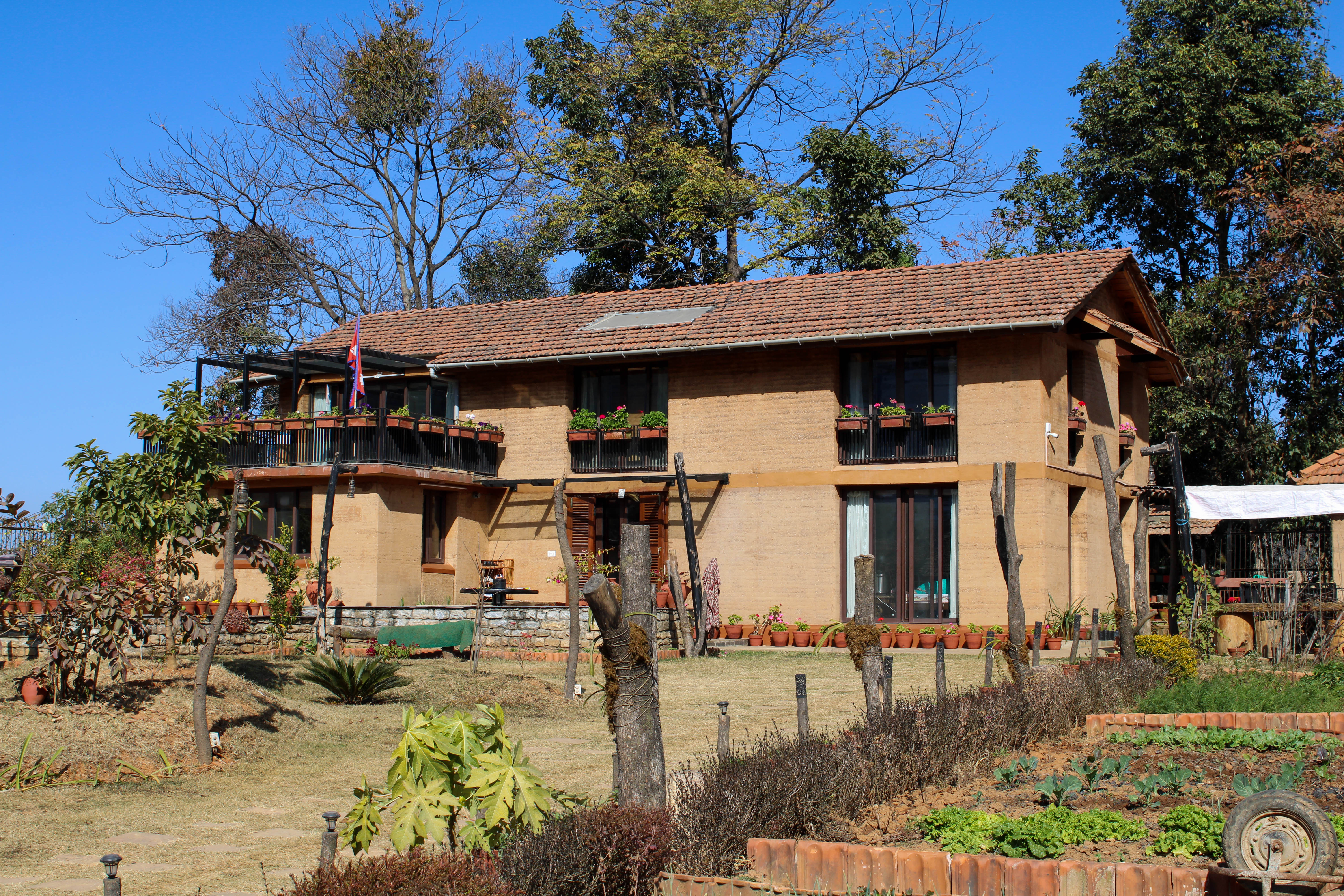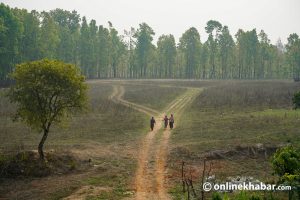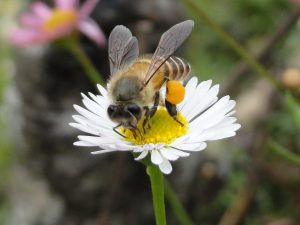Surya Prasad Ghimire starts his day by wearing masks, gloves, a protective suit and headgear. As you might think, he is not a frontline worker mobilised for the treatment of Covid-19 patients but a farmer based in Lubhu of eastern Lalitpur.
But, why does a farmer need such high-degree protection whereas other peers in the neighbourhood do not?
It is because Ghimire has taken on the extra responsibility of running a faecal sludge treatment plant in the community.
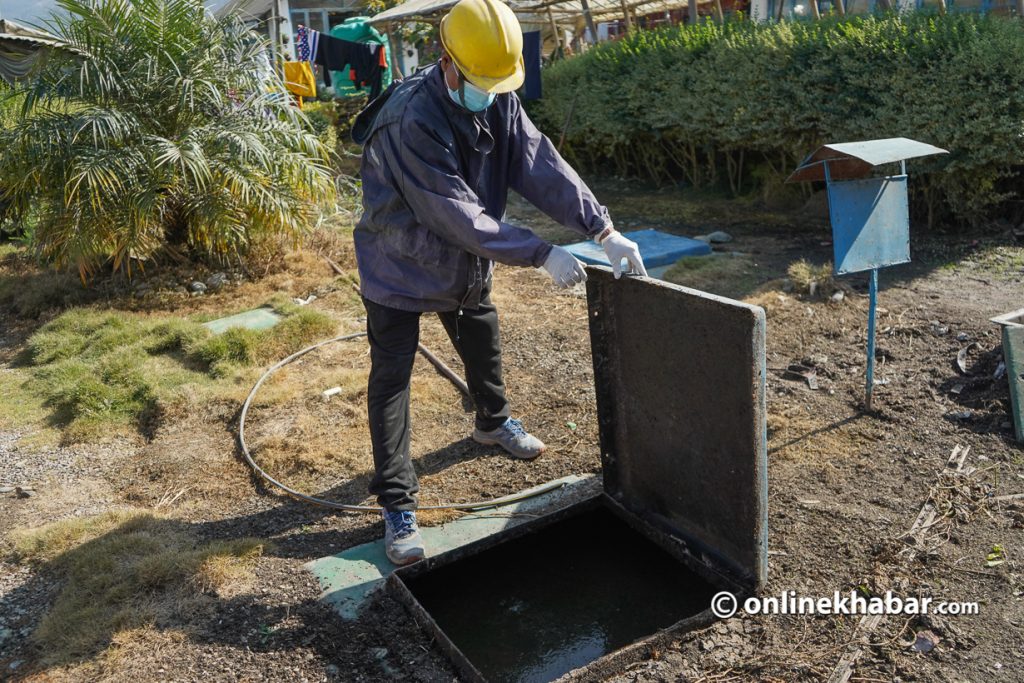
This plant was set up by Environment and Public Health Organisation (ENPHO) five years ago [in March 2016] with semi-prefabricated materials. “It is an experimental plant meant to set an example of how we can capitalise on the waste,” Ghimire says. Yet, five years on, the faecal sludge treatment plant (FSTP) still stands as the only known FSTP in operation within the Kathmandu valley that collects and treats faecal waste. There is a wastewater treatment plant in Guhyeshwari but it differs in function, though it operates with a similar motive.
From this plant, collected faecal sludge can give the benefactors three-fold direct benefits and other indirect benefits that can enhance the living standard of the people. Stakeholders claim that such faecal sludge treatment plants are the future and a necessity for cities like Kathmandu.
The concept
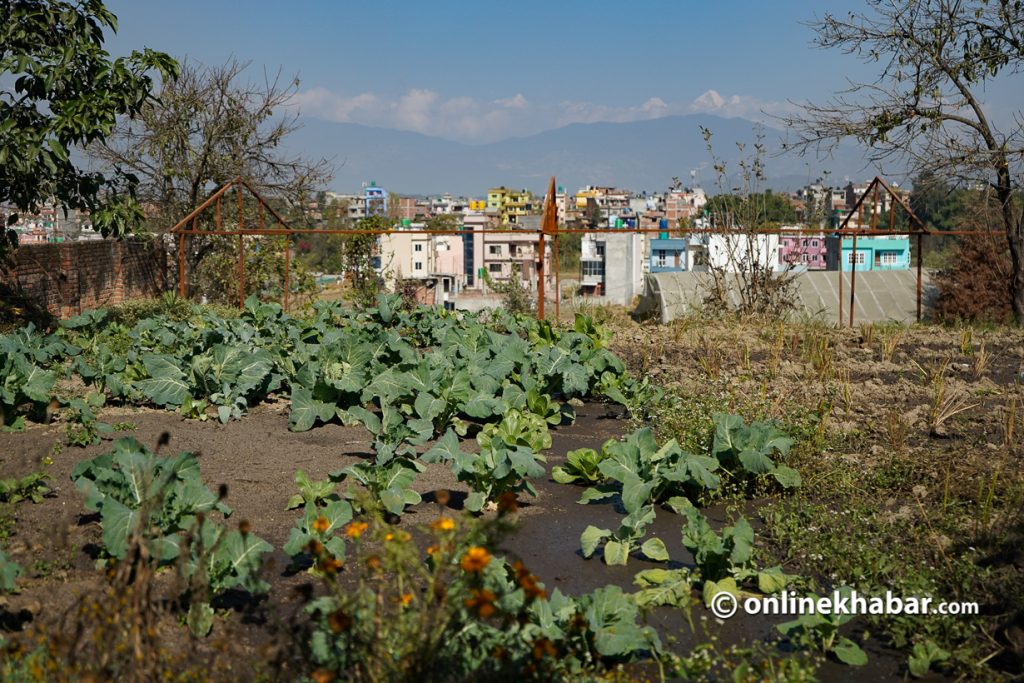
The site of the faecal sludge treatment plant was a farm set up by Shaligram Balgriha to provide organic food for their children. ENPHO collaborated with the organisation and the local government, Mahalaxmi municipality, to set up the plant.
The plant is a physical embodiment of the table-waste-table ideology. “Whatever we eat gets transformed into waste. The waste that we excrete then gets transferred here and treated to get the fertilisers and water used to make food that we eat later. So the cycle continues,” explains Ghimire.
“It is a beneficial concept as people can solve their waste management problem. They get three-fold benefits–fuel in form of biogas, treated water for reusing purposes, and fertilisers to get the organic food that is a rare sight in itself in this time and age,” says Ghimire, who primarily works as a farmer for Shaligram Balgriha, an orphanage.
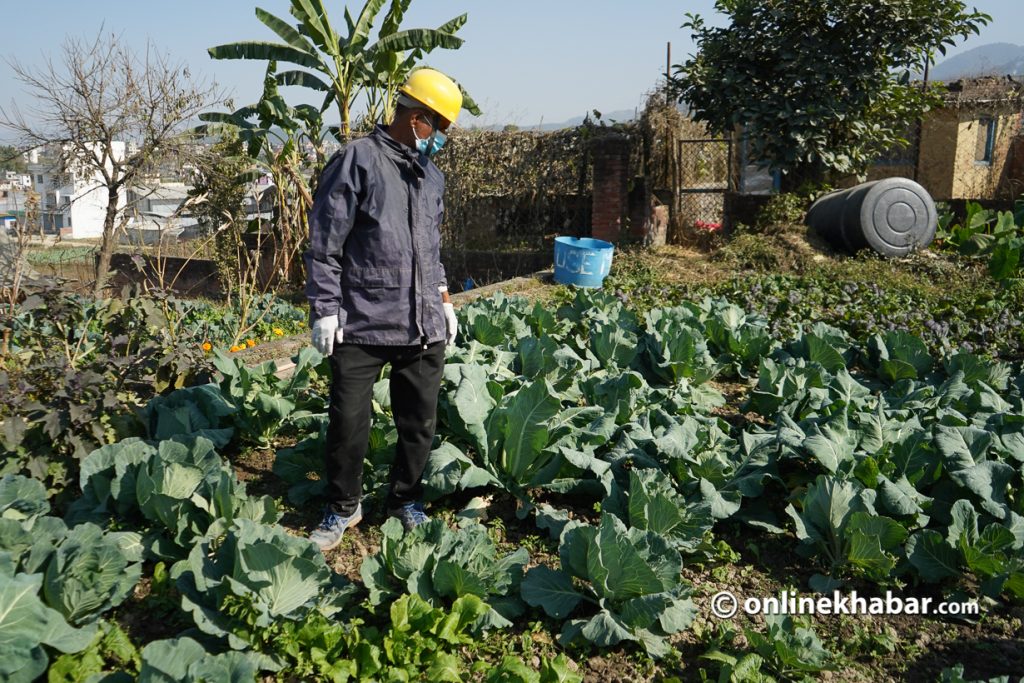
As a direct beneficiary of the plant for six years, Ghimire also says, “The addition of the faecal sludge treatment plant has been a boon for me. I have access to organic food that I grow myself. I do not have to spend on the chemicals or the additional water for irrigation. In addition. because of the collected water, I can grow plants and shrubs throughout the year in cycles, unlike the adjacent farms that grow crops seasonally.”
The biogas has reduced his expenses for the cooking gas as well. Ghimire says the best part is that the waste does not pollute our rivers.
But, there are some restrictions. The plant does not accept waste from industrial or medical fields but only the ones from households or communities as the former two might contain chemicals that can hinder the process.
The process
Every twice to thrice a week, a tanker reaches the faecal sludge treatment plant in Lubhu. The tanker transfers the faecal sludge matter into the feeding tank from where the solid and liquid particles get settled and redirected to different sections. The solid gets transferred to the biogas digester whereas the liquid goes into the anaerobic baffled reactor (ABR) and anaerobic filter (AF).
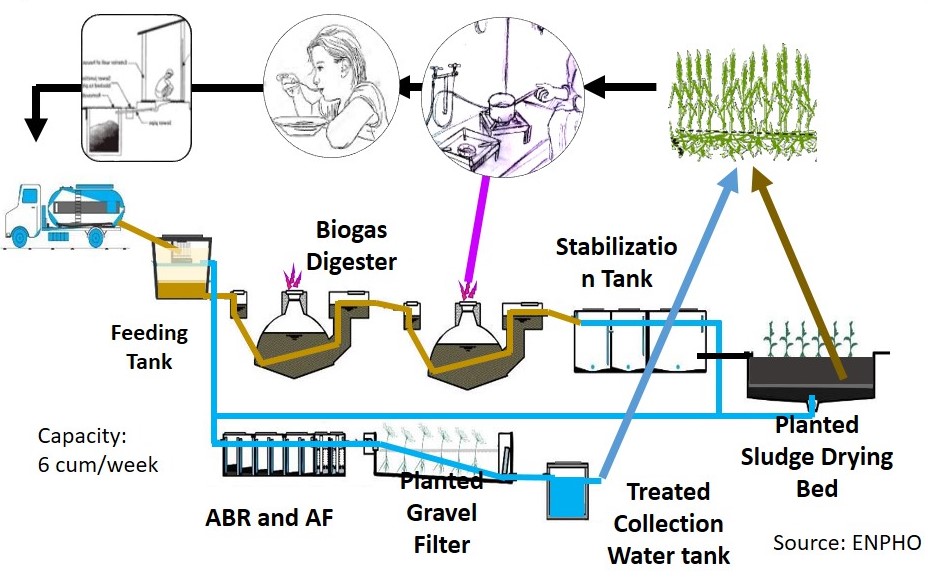
There are two biogas digesters where the sludge or the solid (semi-solid) matters undergo methanogenesis and react with the microbes in the matter. The reaction creates methane gas which is used in the plant site by the Ghimire family to cook. The remaining solid matter is transferred to stabilisation tanks where the matter further settles and dries. This is further used as organic fertilisers on the farm for growing organic crops and vegetables.
The liquid matters go to ABR and AF whereas, through deoxidised processing, the liquid gets treated. The remaining solid particles and dust get settled here. After that, the water flows through the planted gravel filter (PGF) where the roots of the canna plant (sarbada) planted in the area further treat the water and purify it. The treated water is collected in the water (collection) tank, to be used for irrigation or other cleaning purposes throughout the year.
Future opportunities and challenges

Krishna Ram Yendo, the CEO of Eco Concern Pvt Ltd, a waste management company, points in different ways communities are the first beneficiary of such a faecal sludge treatment plant project. A longtime environmentalist, Yendo argues such plants ultimately bring rivers of Kathmandu back to life–from black, smelly flowing sewage to clean, natural water flow. He also strongly believes a proper faecal sludge treatment plant can better the aspects of public health and also the social relationship between communities.
But, given that the concept solely focuses on the human excreta, it surely gets some unfair judgements. For example, Ghimire shares how some locals tease him whereas others completely dismiss his work. Yendo here adds, “Of course, I have also grown weary of such comments; locals want a faecal sludge treatment plant to be far away from their settlement. In Lubhu, when the plant was first established, there were no settlements. But, now, as the settlement is increasing, people are wishing for the plant’s relocation.”
A similar concern, Yendo says, has hindered the expansion of the plant in other parts of the country too. “There is a guideline set in place decades ago, which says a faecal sludge treatment plant should be placed at least 100 metres away from the settlement. However, in today’s reality, we do not have the land or space that meet the requirement. Even when we get suitable land, locals reject the plant. They do not understand the long-term goal. They get wary about the smell, the land price going down and their reputations.”
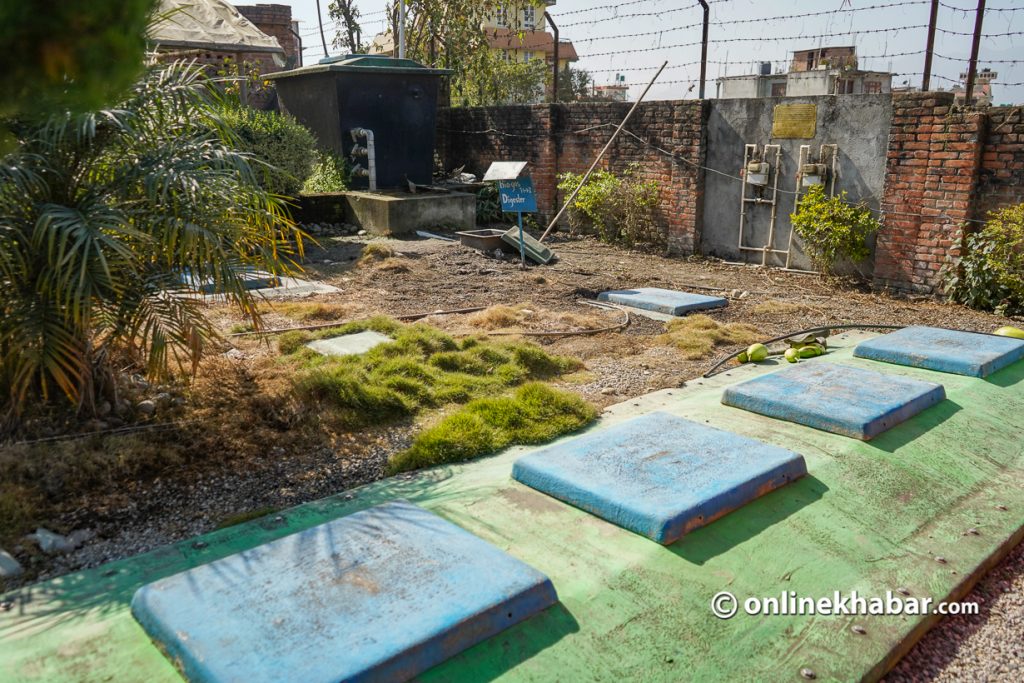
The bureaucracy also is a part of hindrance, Yendo adds. “These faecal sludge treatment plants need to be a priority of the national and local level government. Some local government has the interest but do not have the budget or resources to set up these plants whereas the national government has failed to generate enough interest altogether.”
He argues, “The faecal sludge treatment plants require a large investment; an individual or an institution will not be capable of setting up or expanding the plants without the locals or the government. And, so far, the awareness of why such plants are necessary or why there is a need for long-term vision around such plants is the hardest part for us stakeholders to disseminate.”
However, he says, once people do understand how a faecal sludge treatment plant functions, and why there is a need for such plants–not just in Kathmandu, but all over the nation–its importance will be realised quickly. “And, that is our priority for today,” he says.









